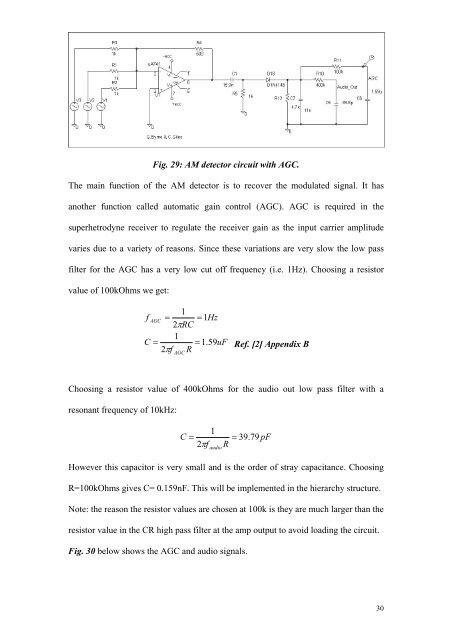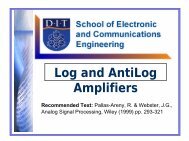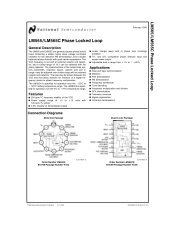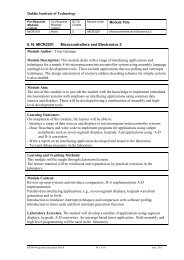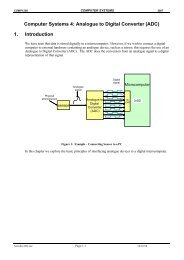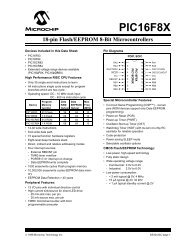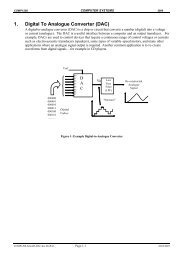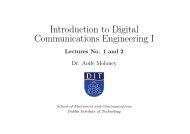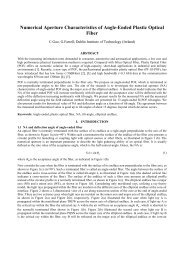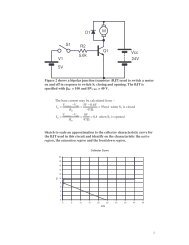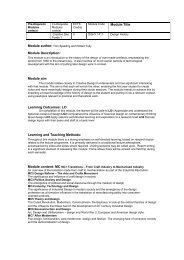simulation of a superheterodyne receiver using pspice - School of ...
simulation of a superheterodyne receiver using pspice - School of ...
simulation of a superheterodyne receiver using pspice - School of ...
Create successful ePaper yourself
Turn your PDF publications into a flip-book with our unique Google optimized e-Paper software.
Fig. 29: AM detector circuit with AGC.<br />
The main function <strong>of</strong> the AM detector is to recover the modulated signal. It has<br />
another function called automatic gain control (AGC). AGC is required in the<br />
superhetrodyne <strong>receiver</strong> to regulate the <strong>receiver</strong> gain as the input carrier amplitude<br />
varies due to a variety <strong>of</strong> reasons. Since these variations are very slow the low pass<br />
filter for the AGC has a very low cut <strong>of</strong>f frequency (i.e. 1Hz). Choosing a resistor<br />
value <strong>of</strong> 100kOhms we get:<br />
1<br />
f<br />
AGC<br />
= = 1Hz<br />
2πRC<br />
1<br />
C = = 1.59uF<br />
2πf<br />
R<br />
AGC<br />
Ref. [2] Appendix B<br />
Choosing a resistor value <strong>of</strong> 400kOhms for the audio out low pass filter with a<br />
resonant frequency <strong>of</strong> 10kHz:<br />
1<br />
C =<br />
2 π f<br />
audio<br />
R<br />
= 39.79 pF<br />
However this capacitor is very small and is the order <strong>of</strong> stray capacitance. Choosing<br />
R=100kOhms gives C= 0.159nF. This will be implemented in the hierarchy structure.<br />
Note: the reason the resistor values are chosen at 100k is they are much larger than the<br />
resistor value in the CR high pass filter at the amp output to avoid loading the circuit.<br />
Fig. 30 below shows the AGC and audio signals.<br />
30


